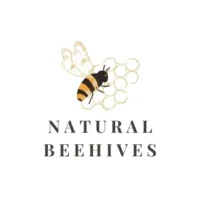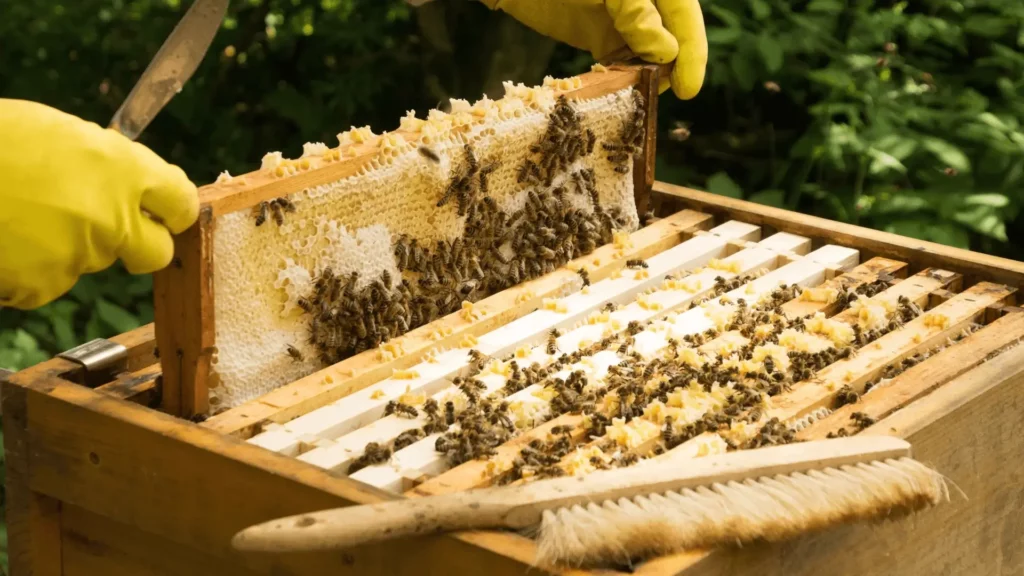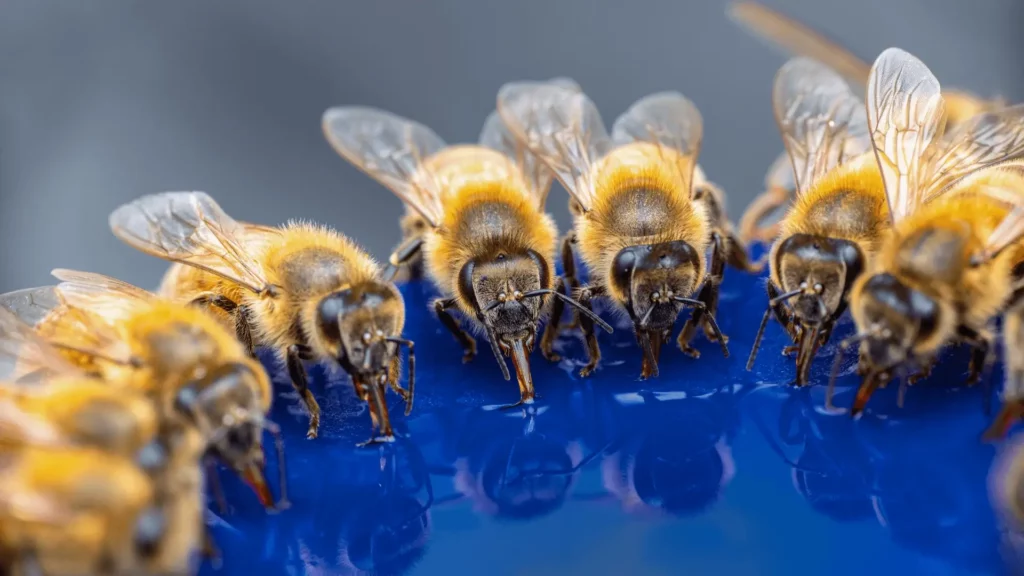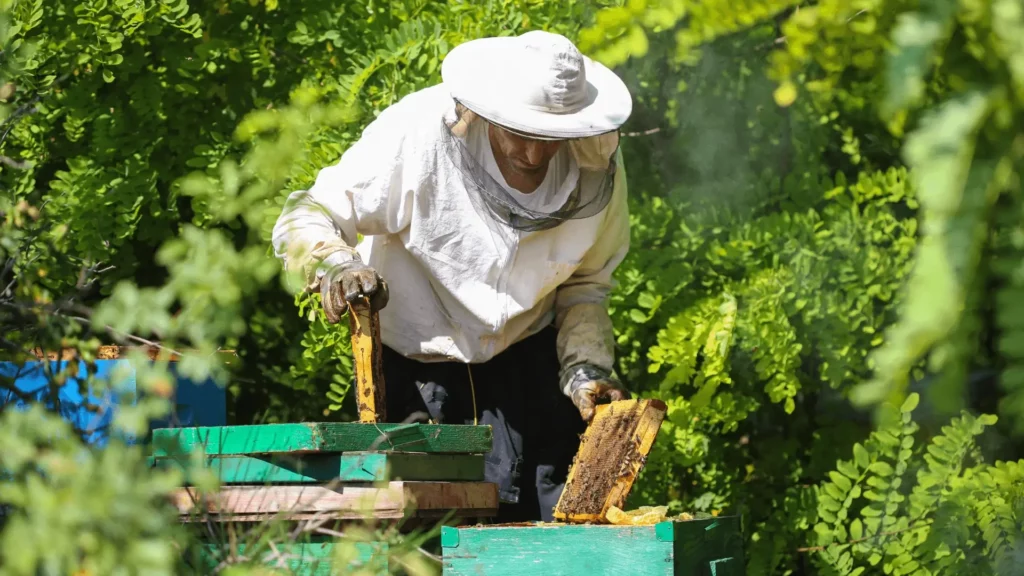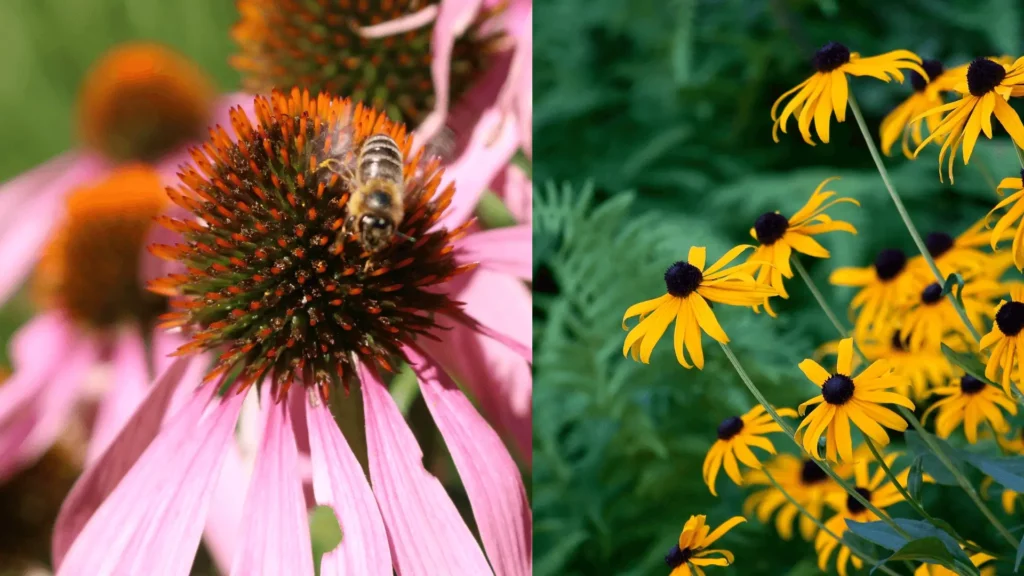
Are you looking to enhance the beauty of your garden while supporting our buzzing friends, the bees? Look no further! We have compiled a list of the best flowers that will not only attract bees but also nourish and sustain them. By planting these bee-friendly blooms, you’ll create a stunning garden while playing a vital role in pollination and biodiversity preservation.
Imagine colorful blooms buzzing with life, as bees flit from one flower to another, spreading pollen and ensuring the survival of countless plant species. By fostering a bee-friendly garden, you’re not just creating a visually appealing space, but also contributing to the health of our ecosystems.
In this article, we will share our top flower recommendations, carefully selected to captivate both you and our pollinator friends. From fragrant perennials like the pale purple coneflower to the beautiful variety of black-eyed Susans, we’ll explore the characteristics, benefits, and bloom times of each flower. So, Keep reading to discover the wonders of bee-friendly blooms!
Introduction to Bee-Friendly Gardens
Creating a bee-friendly garden not only enhances the beauty of your outdoor space but also plays a crucial role in supporting essential pollinators and preserving biodiversity. Bees, including honey bees and native bees, are key contributors to the pollination process, with one-third of the world’s food supply depending on their services.
By planting flowers that attract bees, you create a welcoming habitat that provides them with the nectar and pollen they need for sustenance. This, in turn, helps ensure the pollination of various plants, leading to bountiful harvests and the survival of countless plant species.
Supporting pollinators is vital because they contribute to ecosystem health and the reproduction of flowering plants. Bee-friendly gardens can also serve as stepping stones, connecting fragmented habitats and allowing bees to travel and forage more efficiently.
Let’s dive into the top bee-friendly flowers that will transform your garden into a buzzing oasis of color and life. These flowers, carefully selected for their attractiveness to bees and ability to nourish them, will not only provide a delightful display but also contribute to the important cause of conserving pollinators.
Pale Purple Coneflower
The pale purple coneflower, also known as Echinacea pallida, is a vibrant and pollinator-friendly flower that is highly sought after in bee-friendly gardens. Its unique pale purple petals and cone-shaped center make it a stunning addition to any flower bed. Not only does this beautiful summer garden flower add visual appeal to your landscape, but it also serves as a favorite flower for both honey bees and native bees.
Characteristics:
– Native to North America: The pale purple coneflower is a north american native, making it well-suited to the region’s climate and biodiversity.
– Fragrant perennial: This sun-loving perennial releases a delightful fragrance, making your garden a sensory experience for bees and humans alike.
– Long bloom time: With a blooming period that extends from late spring to early fall, the pale purple coneflower provides lots of beautiful garden flower to enjoy throughout the summer.
Benefits for Bees:
– Abundant nectar source: The pale purple coneflower is known for providing a good supply of sugary nectar, which attracts bees looking for food.
– Pollen plant: In addition to nectar, this flower also offers a good source of pollen for bees, supporting their nutritional needs.
– Native bee-friendly: Native bees, including bumblebees and solitary bees, are particularly attracted to the pale purple coneflower, making it a crucial addition to your garden for fostering native bee populations.
Also read: Bee-Friendly Garden: Flowers That Don’t Attract Bees
Black-Eyed Susan: A Pollinator’s Paradise
Black-Eyed Susan (Rudbeckia spp.) is a vibrant and cheerful addition to any garden. With its golden petals surrounding a dark, captivating center, this North American native flower is not only a favorite flower among gardeners but also a beloved honey bee plant. Here’s why you should consider planting Black-Eyed Susan in your bee-friendly garden:
1. Abundant Blooms: Black-Eyed Susan has a long blooming period, typically from early summer to fall, providing a continuous supply of nectar and pollen for bees throughout the season. Its abundant flowers make it a popular choice for bees seeking nourishment.
2. Easy to Grow: Black-Eyed Susan is a sun-loving perennial that thrives in various soil types. It is known for its resilience and ability to tolerate drought conditions, making it a low-maintenance plant for both experienced and novice gardeners alike.
3. Rich Source of Nectar: The large, daisy-like blooms of Black-Eyed Susan produce ample amounts of sugary nectar, attracting not only honey bees but also native bees and other pollinators. These nectar-rich flowers provide the necessary energy for bees to forage and maintain their colonies.
4. Biodiversity Support: By planting Black-Eyed Susan, you help support biodiversity in your garden. This flower attracts a wide range of pollinators, including butterflies and hummingbirds, creating a vibrant and dynamic ecosystem.
5. Seed Production: Black-Eyed Susan produces seeds that are highly beneficial for birds and small mammals, promoting food sources for wildlife. The seeds can also be collected and saved for future garden plantings or shared with fellow gardening enthusiasts.
When selecting Black-Eyed Susan for your garden, remember to choose from reputable nurseries or seed suppliers to ensure the genetic integrity and quality of the plants.
Agastache Foeniculum
Agastache foeniculum, commonly known as anise hyssop or licorice mint, is a perennial herb that boasts beautiful, purple flower spikes and a delightful licorice scent. This North American native plant is highly attractive to bees and other pollinators, making it an excellent choice for creating a bee-friendly garden.
Characteristics and Growing Conditions
Agastache foeniculum thrives in sunny locations with well-drained soil, making it ideal for gardens and flower beds. With its tall stature, reaching up to three feet in height, it adds an elegant beauty to any landscape. This sun-loving perennial blooms from mid-summer through fall, providing a dazzling display of color for several months.
Bee-Friendly Qualities
Bees are particularly drawn to the fuzzy heads of purplish-red flowers that adorn agastache foeniculum. These vibrant blossoms offer a good supply of both sugary nectar and pollen, making it a favorite honey bee plant. Native bees also flock to this fragrant perennial, contributing to the overall pollinator diversity in your garden.
Tips for Growing Agastache Foeniculum
To ensure the best results when growing agastache foeniculum, provide it with full sun exposure and well-drained soil. This will help the plant flourish and attract the maximum number of bees to your garden. Regular watering is necessary, especially during dry periods, to support healthy growth.
Common Yarrow
Common yarrow (Achillea millefolium) is a versatile and beautiful perennial flower that provides numerous benefits for native bees and honey bees. With its delicate white or pink flowers and feathery foliage, common yarrow adds an elegant touch to any garden while attractively buzzing in pollinators. Here are the key reasons why you should consider planting common yarrow to support bee populations:
1. Abundance of nectar: Common yarrow is a nectar-rich flower, producing copious amounts of sugary nectar that bees find irresistible. By planting common yarrow in your garden, you provide a valuable food source for both native bees and honey bees, ensuring their sustenance and promoting their overall health.
2. Extended bloom period: Common yarrow blooms for an extended period, usually from late spring to early fall, providing a consistent and reliable source of nectar throughout the growing season. This extended bloom period is particularly important for bees, as it ensures a continuous supply of food during critical times, such as periods of drought or when other nectar sources are scarce.
3. Attracts a variety of bees: Common yarrow’s vibrant blooms attract a wide range of bee species, including bumblebees, mason bees, carpenter bees, and honey bees. This diverse mix of pollinators contributes to the overall biodiversity of your garden and enhances its ecological value.
4. Easy to grow: Common yarrow is a hardy and low-maintenance plant, making it suitable for both beginner and experienced gardeners. It thrives in full sun and well-drained soil, tolerating a wide range of conditions and climates. Once established, common yarrow requires minimal watering and can even withstand dry spells, making it an excellent choice for water-wise or xeriscape gardens.
5. Medicinal properties: In addition to its benefits for bees, common yarrow has a long history of medicinal use. Its leaves and flowers contain compounds with anti-inflammatory, analgesic, and antiseptic properties. Harvesting and utilizing common yarrow’s medicinal properties can be an added bonus to your garden’s usefulness and sustainability.
Echinacea Purpurea: A Bee-Favorite Flower
Echinacea purpurea, commonly known as purple coneflower, is a vibrant and beloved flower that attracts a wide variety of bees. With its striking pink petals and tall stature, it is a standout addition to any bee-friendly garden. Let’s explore the specific qualities that make echinacea purpurea a favorite among bees.
Rich in Nectar and Pollen
Echinacea purpurea offers an abundant and reliable source of nectar, making it highly attractive to both honey bees and native bees. The vibrant pink flowers of this perennial plant produce copious amounts of sweet nectar, providing a valuable energy source for bees as they forage.
Extended Blooming Period
One of the reasons why bees adore echinacea purpurea is its long blooming period. The flowers can last from early summer well into the fall season, ensuring a continuous supply of nectar and pollen for bees throughout their active months. This extended availability of resources contributes to the health and well-being of bee populations.
Easy to Access
Echinacea purpurea has a unique flower structure that is well-suited for bee pollination. Its cone-shaped center, or “coneflower,” provides an ample landing pad for bees. The petals surround the cone, creating easy access to the nectar-rich rewards within. Bees can efficiently collect nectar and pollen while moving from flower to flower.
Attracts a Variety of Bee Species
The broad appeal of echinacea purpurea extends beyond honey bees. It also attracts a diverse range of native bee species. Native bees play a crucial role in pollination and supporting native plant populations. By planting echinacea purpurea, you are creating an inviting habitat for these essential pollinators.
Tips for Growing Echinacea Purpurea
– Choose a sunny spot in your garden with well-draining soil for the best results. Echinacea purpurea thrives in full sun.
– Start with healthy, nursery-grown plants or sow seeds in early spring or fall for new growth.
– Provide regular watering during dry spells, especially for newly planted echinacea purpurea.
– Deadhead spent flowers to encourage continuous blooming and prevent self-seeding.
– Consider planting different cultivars of echinacea purpurea to create a visually stunning garden.
Also read: The Ultimate Guide to Identifying Common Types of Bees
Joe-Pye Weed: An Essential Addition to Bee-Friendly Gardens
Joe-Pye Weed, also known as Eutrochium, is a must-have plant for anyone looking to create a bee-friendly garden. Its tall stature and captivating bloom make it a standout addition to any floral display. Let’s explore why joe-pye weed is so beloved by both bees and garden enthusiasts alike.
Attracts a Diverse Range of Bees
One of the remarkable qualities of joe-pye weed is its ability to attract a wide variety of bee species. From honey bees to native bees, this plant serves as a veritable buffet for our buzzing friends. The ample supply of nectar and pollen in the unique, dome-shaped clusters of flowers acts as a magnet, drawing bees in with its irresistible charm.
Provides Abundant Nectar for Late Summer Feeding
As the summer season winds down and fewer nectar sources are available, joe-pye weed stands tall, ready to fill the void. Its blooming period in late summer and early fall ensures a reliable supply of nectar to nourish bees when other flowers may be scarce. This vital food source helps bees build up their energy reserves for the coming winter months.
Tips for Successful Cultivation
If you’re considering adding joe-pye weed to your garden, here are a few cultivation tips to ensure its success:
1. Sun Exposure: Plant joe-pye weed in an area that receives full sun to partial shade for optimal growth.
2. Soil Conditions: This sun-loving perennial thrives in moist soil with good drainage. Ensure the soil remains consistently moist, especially during the plant’s early establishment phase.
3. Maintenance: While joe-pye weed is generally low-maintenance, removing spent flower heads can prolong the blooming period and promote a tidy appearance.
Helianthus Annuus
Helianthus annuus, commonly known as sunflower, is not only a beautiful addition to any garden but also a favorite among bees. These tall, sun-loving perennials are native to North America and are cherished for their large, vibrant blooms and cheerful appearance.
Here are the bee-friendly qualities and benefits of Helianthus annuus:
Abundant Nectar Source
Sunflowers are known to produce copious amounts of nectar, making them highly attractive to bees. Their sunny, golden blooms are a rich source of sugary nectar, providing bees with the energy they need for their foraging activities. Planting Helianthus annuus in your garden ensures a bountiful supply of nectar for our buzzing friends.
Pollen Provider
In addition to nectar, sunflowers also offer an abundant supply of nutritious pollen. Bees collect pollen to feed their young and promote overall hive health. The large size of sunflower blooms with an abundance of vibrant yellow petals makes it easy for bees to access the pollen-rich centers, known as the disk florets.
Extended Blooming Period
One of the advantages of sunflowers is their relatively long blooming period. Depending on the variety, sunflowers can bloom for several weeks, providing a steady and consistent food source for bees throughout the summer and into the fall. This extended availability of nectar and pollen can help sustain bee populations during critical times when resources may be limited.
Ease of Cultivation
Helianthus annuus is relatively easy to grow and maintain, making it an excellent choice for both novice and experienced gardeners. With proper care, these sun-loving perennials can thrive in a variety of soil types and climatic conditions. Sunflowers typically prefer well-draining soil and full sun exposure.
Echinacea Pallida: Appealing Benefits for Bees
Echinacea Pallida, also known as pale purple coneflower, is a remarkable addition to any bee-friendly garden. With its striking pink-purple petals and distinctive cone-shaped center, this perennial flower not only adds beauty to your garden but also serves as a valuable resource for bees and other pollinators.
Attractiveness to Bees
Bees are naturally drawn to the vibrant colors and rich nectar reserves of Echinacea Pallida. The large, daisy-like flowers provide a bountiful supply of both sugary nectar and protein-rich pollen, making it a perfect haven for these busy pollinators. Bees, including honey bees and native bees, flock to this enchanting flower during its blooming period, which usually spans from midsummer to early fall.
Nectar Source and Pollinator Support
As one of the finest garden varieties of Echinacea Purpurea, Echinacea Pallida offers considerable benefits to bees. The fuzzy heads of purplish-red petals create a feast for the bees, attracting them with their abundant nectar. The cone-shaped center of the flower contains a treasure trove of nectar, making it easily accessible for bees to gather and fuel their pollination activities.
Low-Maintenance and Hardy
Echinacea Pallida thrives in sunny locations with well-drained soil. It is a hardy plant that can withstand various weather conditions, making it suitable for diverse regions across North America. Whether you have a flower bed or a dedicated garden plot, this elegant beauty will flourish with minimal effort, providing sustenance for bees and a visual delight for garden enthusiasts.
Classic Goldenrod: A Nectar Source for Bees
Classic goldenrod (Solidago spp.) is not only a beautiful addition to your garden but also a crucial nectar source for bees. As the name suggests, this perennial flower features striking golden blooms that bring a vibrant burst of color to any landscape.
Why Bees Love Classic Goldenrod
1. Rich Nectar Source: Bees are naturally drawn to classic goldenrod due to its copious production of nectar. The flowers provide a reliable and abundant food source, attracting both honey bees and native bee species.
2. Extended Blooming Period: Classic goldenrod blooms from late summer to early fall, making it a vital resource for bees during a time when nectar availability might be limited. By planting this flower, you ensure a continuous nectar supply when other sources may start to dwindle.
3. Pollination Benefits: The bright yellow flowers of classic goldenrod are highly appealing to bees. As they forage for nectar, bees inadvertently collect and transfer pollen, aiding in the pollination of other plants in your garden and the surrounding ecosystem.
Tips for Growing Classic Goldenrod
1. Suitable Growing Conditions: Classic goldenrod thrives in full sun to partial shade, making it adaptable to various garden settings. Ensure that the soil is well-drained, as this plant prefers drier conditions.
2. Low Maintenance: Once established, classic goldenrod requires minimal care. It is a hardy and resilient plant that can endure different climates and soil types. Regular watering during dry spells will help maintain its vigor.
3. Attractive to Other Wildlife: Not only do bees benefit from classic goldenrod, but it also attracts butterflies and other pollinators. Adding this flower to your garden promotes biodiversity and contributes to the overall health of your local ecosystem.
Also read: The Incredible Life of Digger Bees – Everything you need to know
Conclusion
Planting bee-friendly flowers in your garden not only adds beauty and vibrancy but also plays a crucial role in supporting and preserving bee populations. By providing a diverse range of nectar and pollen sources, you can create a haven for these essential pollinators and contribute to the overall health of ecosystems.
The benefits of planting bee-friendly flowers are numerous. These flowers attract a wide variety of bees, including honey bees and native bees, which are vital for the pollination of many plants. By attracting bees to your garden, you are promoting biodiversity and ensuring the reproduction of plants, including food crops.
Additionally, the presence of bees in your garden can enhance the overall health and productivity of your plants. Bees transfer pollen from one flower to another, facilitating fertilization and fruit production. This can result in higher yields for fruit trees, vegetables, and ornamental plants.
Furthermore, supporting bees and other pollinators through your garden choices can help combat the decline in bee populations. Bees face numerous challenges, including habitat loss and pesticide exposure. By planting bee-friendly flowers, you provide them with a safe haven and access to vital resources.
Incorporating bee-friendly flowers also brings the joy of observing these fascinating creatures up close. You can witness their busy activities as they forage for nectar and pollen, benefiting both your garden and your connection with the natural world.
So, whether it’s the pale purple coneflower, black-eyed susan, or any other bee-friendly flower, your efforts in creating a bee-friendly garden can make a measurable difference. Let’s embrace these buzz-worthy friends and contribute to the conservation of bees and the natural world as a whole.
